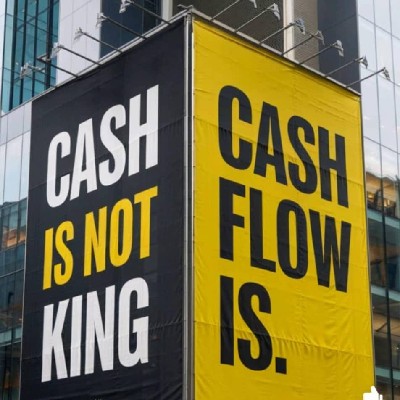
$TRADOOR
Strategies on TRADOOR Coin:
Trading TRADOOR (TRD) on Bitget has been an interesting ride for traders, especially watching how the coin moves with strong momentum while keeping solid support levels. Instead of just looking at the price, they have been building strategies around how it behaves in real time. Here’s my take as someone who studied traders trading the token.
Strategy 1: Buy the Support, Sell the Resistance
One thing I’ve noticed is that TRADOOR respects its support zone around $1.85 – $1.90. Anytime the coin dips close to that level, it’s a solid entry point for them. On the flip side, the $2.10 mark acts as resistance, and that’s where they usually secure profits. This simple range-trading approach has given them consistent gains without overcomplicating things.
Strategy 2: Scaling in During Consolidation
Instead of going all-in, they scale their buys whenever TRADOOR consolidates sideways. For example, when it hovers between $1.90 and $1.95, they slowly increase their position. This way, they reduce risk while positioning themselves for the next breakout. It’s a safer play in a market that can turn volatile quickly.
Strategy 3: Riding Momentum with Tight Stop-Loss
TRADOOR moves fast when it breaks resistance. they have learned to ride those momentum pushes but with a tight stop-loss, usually just below the breakout level. If it fails, they are out quickly with minimal losses. If it runs, they ride the wave toward $2.20 or higher.
Strategy 4: Splitting Between Short-Term and Long-Term Bags
Personally, they don’t treat TRADOOR just as a day trade. they keep two bags:
Short-term bag: For quick swing trades within the $1.85 – $2.10 range.
Long-term bag: Holding for the bigger picture, especially since TRADOOR’s DeFi speed narrative could attract massive adoption.
This dual strategy helps them take profits now while still having exposure if the project explodes in the future.
their Outlook Moving Forward
As long as TRADOOR maintains liquidity and strong trading volume on Bitget, they see more upside. eyes are on the $2.20 – $2.30 zone as the next target. But like any disciplined trader, they are ready to cut quickly if it drops below key support. Flexibility is key in this market.
Final Word: Trading TRADOOR has taught me that discipline beats hype. By respecting support and resistance, scaling smartly, and splitting short- and long-term positions, I’ve seen traders managed risk while maximizing opportunities. For me, TRADOOR isn’t just another token it’s a coin where strategy pays off.
$TRADOOR
GATA 1H Wake-Up: Quiet Base, Rising Momentum — Breakout Toward 0.04 Looks Probable
Quick summary
GATA has been carving a low-volatility base on the 1-hour chart inside a clearly defined weak-low support band. Price is coiling under a descending trendline and the Chande momentum oscillator is rising from midline territory. The short-term structure shows repeated higher lows and a compact double-base feel — a favorable edge for a controlled breakout trade that targets the overhead supply area near 0.039–0.041 if confirmed.
What the chart is showing
Structure: After a local break of structure and a small change-of-character, price settled into a horizontal accumulation range highlighted by a yellow support zone. That band is acting as the structural floor; buyers have defended it multiple times.
Pattern: The price action forms a compact basing pattern with two near-equal lows and measured micro-swings (noted on the chart). This reads like a mini double-bottom / rounded base on the hourly timeframe.
Resistance: A descending trendline connects recent highs and serves as the immediate supply barrier. Above that sits a shaded supply box labeled as a “weak high” — the logical first target for a successful breakout.
Momentum: The ChandeMO is climbing toward neutral-to-bullish levels (approaching the midline) which supports the case for upside continuation if momentum keeps rising on a breakout.
Tactical trade ideas (1H frame)
Aggressive entry — buy on a clean 1-hour bullish engulfing candle that closes above the descending trendline and the local swing high, with volume confirmation. Place a protective stop under the recent range low within the yellow box. Scale out partial position at first supply and let the remainder run with a trailing stop.
Conservative entry — wait for breakout plus retest. If price reclaims the former trendline as support and forms a successful retest on the 1-hour, enter on confirmation (bullish engulfing or a strong pin bar) and use a tighter stop under the retest low. This reduces false breakout risk and improves reward-to-risk.
Engulfing setup specifics
A 1-hour bullish engulfing pattern that completely engulfs the prior bar and closes above the trendline is a high-probability signal here. Use the ChandeMO as a filter: prefer setups where the oscillator is rising but not yet extreme. Combine engulfing confirmation with a volume uptick for better odds. For exits, watch for bearish engulfing patterns at the supply zone or loss of the trendline on a closing basis.
Bearish scenario to respect
If price is rejected at the trendline and prints a strong bearish engulfing candle with momentum rolling over, expect a quick reversion to the yellow support. A decisive break and close below that band would invalidate the short-term bullish thesis and open the path to deeper structural lows, so cut risk quickly in that case.
Fundamentals snapshot
Lower-cap tokens with thin order books are sensitive to on-chain flows and announcements. Watch for sudden exchange inflows or project news that could accelerate moves. Favor smaller size entries and avoid high leverage until structure holds.
Long-term view
On higher timeframes the token remains range-dependent. A sustained reclaim of the overhead supply and daily structure flip would be required for a lasting trend change. For now, treat the hourly moves as tactical opportunities and align size with broader market direction.
What’s next
Watch the descending trendline and the yellow weak-low band. Confirm a breakout with an hourly close above the line, bullish engulfing price action, and rising momentum. That sequence points to 0.039–0.041 as the first meaningful target. If rejection occurs, tighten stops and prepare for a retest of support.
Risk reminder
Use conservative sizing, place stops under structure, and trade only confirmed setups. Volatility and low liquidity can produce quick false moves.
$GATA
🚀 $SWTCH/USDT Market Analysis – Key Levels, Predictions & Street Insights
The performance of $SWTCH/USDT in the last 24 hours shows high volatility, with price currently at 0.1485 USDT, reflecting a -6.00% 24h change.
📊 Market Summary
24h High: 0.2060
24h Low: 0.1429
24h Change: -6.00%
24h Volume: 75.17M SWTC
24h Turnover: 13.04M USDT
📈 Market Analysis
Looking at the price movement on the 1H chart:
The market opened with heavy volatility, dropping sharply from 0.4845 to the current 0.1485 levels.
Moving Averages (MA5: 0.1636, MA10: 0.1691, MA20: 0.1676) indicate that price is trading below all short-term averages, confirming bearish dominance.
MACD (-0.00294) remains in the negative zone, suggesting downward momentum is still strong.
Volume activity shows sellers are still in control, though some signs of accumulation appear around support.
📉 Trend Insight
The overall trend remains bearish, with sellers driving the market lower.
However, buyers are attempting to defend the 0.1429 support, which could become a reversal point if demand increases.
A short-term sideways consolidation is forming, meaning the market is searching for a clear direction.
If bulls step in, a trend reversal toward 0.163 – 0.170 zone may occur. If not, continuation downward to 0.100 support is highly possible.
🔮 Predictions
Bullish Case: Breakout above 0.170 resistance could push price toward 0.20+ levels.
Bearish Case: Breakdown below 0.1429 support may trigger further decline toward 0.100 zone.
🛠 Strategies
Scalpers: Focus on trading within 0.145 – 0.165 range. Quick in–out moves with tight stop-loss are key.
Swing Traders: Stay patient until price confirms a breakout above 0.170, then target higher zones.
Risk Managers: Always keep stop-loss below 0.142 to limit downside exposure.
✍️ Experiences (by ProfAkm_Emn)
From my trading perspective, the 0.1429 support zone is the real battleground. Each time price consolidates at such levels after a heavy sell-off, two outcomes usually follow:
1. Accumulation Phase – strong hands start buying silently, preparing for a bullish breakout.
2. Breakdown Trap – weak holders exit, allowing whales to push even lower before rebounding.
The current volume dynamics suggest both possibilities are alive. Traders should stay disciplined, avoid emotional decisions, and let the market confirm the next move. In every market, preserving capital comes before chasing gains.
🧩 Street Debate
🔵 Bullish traders argue this dip is just a healthy correction before the next bounce.
🔴 Bearish traders believe selling pressure could drag the token below 0.100 if demand doesn’t hold.
⚡ The market is divided — where do you stand?
🛡 Support Levels – What They Mean for Traders
First Support: 0.1429 – 0.1450 → This is the “defense line.” If buyers hold this level, it signals accumulation. Holders gain confidence here, believing a bounce is possible.
Second Support: 0.1000 → Considered the last hope zone. If price falls here, short-term traders often exit, but long-term holders may treat it as a discount entry. This is where the tough decision comes in: do you hold and wait, or trade out to protect capital?
🚧 Resistance Levels – Key Barriers to Break
First Resistance: 0.1630 – 0.1690 → A zone where short-term traders usually take profits. If bulls fail to break this, sellers remain in control. Traders should ask: is this resistance strong enough to stop the rally, or is a breakout near?
Second Resistance: 0.2060 → A major test level. A breakout here often sparks FOMO among new buyers, confirming a bullish reversal. At this stage, holders may see reason to stay in, while active traders jump in to ride the wave.
Interaction:
👇 Share your thoughts:
Do you see $SWTCH as a buy at support or risky at resistance?
Would you prefer to hold long-term or trade short-term at these levels?
Where do you personally see the next big move coming from?
Hashtags:
#SWTCH #USDT #CryptoTrading #MarketAnalysis #TrendInsight #SupportLevels #ResistanceLevels #HoldOrTrade #StreetDebate #TradingStrategies #CryptoInsights #ProfAkm_Emn
The Art of Trading $ART: Turning Creativity Into Calculated Market Moves.
The crypto space has expanded far beyond Bitcoin and Ethereum. Tokens now represent not only money or governance but also culture, digital creativity, and unique ecosystems. $ART is one such token, and as its ticker suggests, it is positioned to blend the world of finance with the realm of creativity. Whether $ART is part of an NFT ecosystem, a Web3 art marketplace, or a DeFi protocol using art as collateral, traders must treat it with the same disciplined strategies as any other token. In fact, the artistic branding often makes it even more volatile because hype can push short-term prices much faster than fundamentals.
In this article, I’ll share unique insights, practical trading strategies, a framework for analyzing market data, and the critical questions every trader should ask before entering a position in $ART.
First Step: Understanding the Nature of $ART
When approaching a token like $ART, you must understand its core utility. Is $ART:
A utility token powering NFT marketplaces or creative platforms?
A governance token allowing holders to decide the direction of a decentralized art ecosystem?
A speculative token mostly fueled by hype around digital art and culture?
Your trading strategy depends on the answer. If it’s utility-driven, adoption, user growth, and marketplace transaction volume matter most. If it’s speculative, liquidity and sentiment carry more weight.
👉 Action Point: Always verify the official contract address on a blockchain explorer (like Etherscan or BscScan). Scammers often release imitation tokens, especially with names as common as $ART.
Market Data Analysis for $ART
Before making any trade, gather and interpret the following data points:
Market Capitalization vs. Volume
If $ART has a $50M market cap but only $200k in daily volume, it means liquidity is thin. This can trap traders in losing positions because selling would cause large slippage.
Ideally, daily volume should be at least 5–10% of the market cap.
Liquidity Pools and Locks
On decentralized exchanges, check how much liquidity is in the main trading pools. Also, investigate whether liquidity is locked for a set period. If developers can pull liquidity at any time, that’s a red flag.
Holder Distribution
Review the concentration of holdings. If the top 10 wallets own 60% of the supply, there’s high whale risk. Balanced distribution is healthier.
Tokenomics and Supply Dynamics
How many tokens are in circulation versus the total supply?
Are there future unlocks or emissions? Upcoming token releases often trigger sell pressure.
Adoption and Ecosystem Usage
Are NFT marketplaces or art platforms actively using $ART as a currency?
On-chain activity such as transactions and daily active addresses should be rising, not falling.
Audit Status and Security
Has $ART’s smart contract been audited by a reputable firm? The art-token space has historically attracted scams, so this step is crucial.
Unique Insights for Trading $ART
1. Sentiment Moves Faster Than Fundamentals
Art-related tokens often move based on community hype, celebrity endorsements, or NFT collaborations. This creates fast spikes and equally fast crashes. Traders must remain emotionless and avoid FOMO.
2. Partnerships Can Be Game-Changers
If $ART integrates with a major NFT marketplace or partners with a high-profile artist collective, it can double or triple in days. Staying tuned to announcements and social channels is just as important as chart-watching.
3. Liquidity Is Your Lifeline
Thin liquidity is common in art tokens. If you plan to trade $ART actively, always check DEX liquidity before entering. It’s better to risk a smaller size than to get stuck in a trade you cannot exit.
4. Whale Watching Is Non-Negotiable
Large holders can dominate price action. Use on-chain tools to monitor big wallets and note whether they are accumulating or selling.
Trading Strategies for $ART
Strategy 1: Swing Trading With Scaled Entries
Identify clear support and resistance levels.
Enter gradually at support zones instead of buying all at once.
Take profits at resistance or after a 30–50% move upward.
Strategy 2: Event-Driven Trading
Monitor NFT partnerships, exhibitions, or exchange listings.
Enter before major events and secure profits quickly — don’t assume long-term sustainability of hype-driven pumps.
Strategy 3: Risk-Managed Long-Term Holding
Only viable if $ART has real adoption (NFT marketplace, staking mechanics, DAO governance).
Accumulate on dips and consider staking if available to earn yield.
Limit allocation to a small portion of your portfolio, since art-themed tokens are more speculative than infrastructure tokens.
Strategy 4: Scalping During High Volume Periods
Enter during liquidity surges (after big news or listings).
Use tight stops and small size to capture quick moves.
Avoid low-volume times to minimize slippage.
Engaging Questions Traders Must Ask Before Buying $ART
Utility: What is $ART’s real use case beyond speculation?
Liquidity: Are pools deep enough to support my trade size?
Supply: Are there token unlocks or emissions scheduled soon?
Holder Risk: Do whales control too much of the supply?
Security: Is the contract audited, and is liquidity locked?
Adoption: Are artists, platforms, or NFT collectors actively using $ART?
Catalysts: Are there upcoming partnerships or listings that could boost demand?
Exit Plan: At what profit percentage will I take gains? Where is my stop-loss?
Portfolio Impact: If $ART drops 60% overnight, does my portfolio survive?
Closing Thoughts
Trading $ART is as much about mindset as it is about numbers. Art tokens thrive on hype, community, and culture — but long-term sustainability depends on adoption and real-world use cases. By combining disciplined market analysis with strategies like scaled entries, event-driven trading, and whale monitoring, traders can turn the volatility of $ART into opportunity instead of disaster.
In a market where creativity meets capital, the smartest traders are those who approach $ART like a masterpiece: studied carefully, appreciated for its potential, but never bought blindly.
$ART














